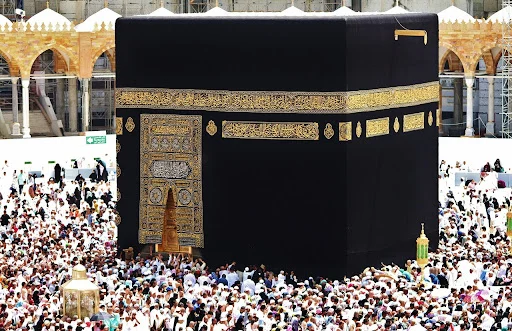How the Early Muslims Performed Umrah: A Qur’anic and Historical Perspecti

Umrah is a very important trip for Muslims, a bit like a mini-Hajj. Even though you don’t have to do it like Hajj, many Muslims choose to. They do it to feel closer to Allah and follow what the Prophet Muhammad (PBUH) did. It’s seen as a really good deed. But how was Umrah performed in the early days of Islam? What does the Quran say about it, and how did the first Muslims approach it?

Come with me to learn about Umrah! We’ll see the main events, the rituals people perform, and the valuable lessons shared by the first Muslims.
You can find Umrah mentioned in the Qur’an many times, usually with Hajj. If you want to see the key reference, look in Surah Al-Baqarah (2:196):
“And complete the Hajj and Umrah for Allah.”
This verse shows that Umrah is a real way to worship Allah. It also teaches us that when we do it, our reason must be truly for Allah, meaning with a pure heart.
Even though the Quran doesn’t list every single step of Umrah, it does support the way we do it today. We know about the rituals like wearing Ihram, doing Tawaf, performing Sa’i, and getting our hair cut (Halq or Taqsir) because the Prophet showed us, and the early Muslims followed his example.
The Qur’an also mentions Safa and Marwah in Surah Al-Baqarah (2:158):
“Indeed, Safa and Marwah are among the symbols of Allah. So whoever makes Hajj to the House or performs Umrah, there is no blame upon him for walking between them…”
This verse confirms that Sa’i (walking between Safa and Marwah) was part of Umrah from the beginning. Today, whether people go for Umrah on their own or choose Umrah deals from Manchester, the steps are still based on the Qur’an and the way the Prophet taught us.
The Treaty of Hudaybiyyah and the Delayed Umrah
In 628 CE, Prophet Muhammad (PBUH) and approximately 1,400 of his followers travelled to Makkah to perform Umrah. They wore simple white clothes (called Ihram) and brought an animal for sacrifice. This showed everyone they came in peace and had no plans to fight. They just wanted to perform their religious pilgrimage.
But the Quraysh tribe stopped them when they got close to a place called Hudaybiyyah. They all agreed to a peace treaty after some discussion. This meant the Muslims couldn’t do their Umrah that year and had to go back to Madinah. However, the good news was that they were allowed to come back and do it the very next year.
The Qur’an talks about this event in Surah Al-Fath (48:27):
“Indeed, Allah will fulfill His Messenger’s vision in truth: You will surely enter the Sacred Mosque, if Allah wills, in security.”
Umrat al-Qada (The Fulfilled Umrah)
The Muslims returned to Makkah in 7AH, one year later, to complete the pilgrimage they had been told they could do. This event is called Umrat al-Qada, meaning it was the “fulfilled” or “make-up” one.
This time, they went to Makkah without any trouble because it was a part of their agreement. The Quraysh people left the city for three days so the Muslims could do their prayers and rituals. The Prophet (PBUH) and his followers completed every step of Umrah:
- They entered Ihram from the Miqat (likely Dhul-Hulaifa for the people of Madinah).
- They performed Tawaf (circumambulation) around the Kaaba.
- They did Sa’i between Safa and Marwah.
- They ended the Umrah by shaving or trimming their hair.
It was also a political and symbolic success. It was clear that Islam was growing in strength and getting more attention.
Lessons from the Early Umrah
The early Muslims strongly believed in Umrah. Even though it was hard to travel, there were political issues and many other challenges, but they still made sure to perform. This shows that Umrah was more than just a religious trip; it was a powerful way for them to express their faith and stay united.
They knew the purpose of what they were doing. They didn’t just rush or do them like a normal routine. Instead, they performed Umrah with focus, care, and honest hearts.
Final Words
Early Muslims performed Umrah very simply and with strong belief. They followed rituals found in the Qur’an and followed what the Prophet Muhammad (PBUH) did. Stories like the Treaty of Hudaybiyyah and Umrat al-Qada prove how committed they were to their religion, even when things were tough, and they faced many challenges.
We see each year millions of Muslims go for the Umrah. So, as a UK Muslim, if you are planning to perform your Umrah and looking for Umrah packages 2026 from the UK, learning how the early Muslims did Umrah can help make the experience more meaningful. If we understand how it was done a long time ago, we can bring back its real meaning and do it with more purpose and understanding.



